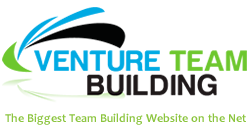It’s been about twelve years since I first learned how to review and became convinced of the value of reviewing and reflective practice. Since learning about reviewing, I have spent a lot of my time training and coaching instructors on how to develop their reviewing skills.
After many years of observing new and experienced instructors in action, here is a list of the 7 most common reviewing mistakes I have encountered.
Not allocating enough time
This happens often, especially when delivering an activity experience. Due to poor planning, and too much spent on the introduction and demonstration, the instructor rushes through the rest of the session including the review.
I typically try and allocate at least 10% of the session time to reviewing (this might go up to 20% depending on the learning outcomes). Adequate time should be allocated to allow for reflection, exploration, discussion and transfer of learning.
For more information on how to structure a session, check out my, ‘Teaching Team Building – Session Structure’ article.
Talking too much
Some instructors tell the group what they have learned rather than the group telling them. For learning to take place, participants must go through a processing stage, the more active this is, the better chance there is for self-discovery.
The more responsibility participants have to reflect, discuss and draw conclusions about their experience, the more they will take away from the session. Remember that in most cases the activity is used as a vehicle for learning and your role is help people learn from their experience. Try to be engaging and interactive and use questions to draw out the key learning points.
I have in the past witnessed experienced instructors talk non-stop for 10 minutes about what the group learned during the session. As you can imagine the group switched off after about a minute, yet despite the apparent boredom of group members the instructor continued to ramble on for another 9 minutes about nothing. All he had to do was ask them the question, ‘what did you learn from today’s session? ‘and lead on from there.
Poor questioning technique
As reviewers, we should care whether participants know how to answer the question, rather than what the answer actually is. When someone answers the question, ask them how they come to that conclusion. The most important thing is to keep building on each answer to try and create new learning opportunities.
The most common question is the open question, which is designed give participants a lot of latitude when they respond. The problem is they don’t know that. Many people believe that all questions have a correct answer and since they don’t know the correct answer, they must not understand the question. Allow your participants to direct the flow of discussion and use questions to guide them towards the learning opportunities.
Learn how to use questions when reviewing
Failing to review learning objectives
If you are provided with learning objectives or event outcomes, it is important that you include these when reviewing. For each objective select an appropriate activity that will help you achieve that outcome and follow up after the activity by getting participants to look back on the experience and identify that learning outcome.
It is sometimes difficult for new instructors to use connections and effective links between the activity and learning outcomes. Sufficient planning and facilitation is required to ensure your participants get the most from the experience. Facilitation means ‘to make something easy’, so be sure to select activities that will make the ‘learning easy’ for participants and follow up with a review to help clarify, measure and celebrate objectives.
Failing to establish relevance
People learn best when they understand the why and the relevance of content in relationship to their own interests and career goals. To motivate participants, you should briefly begin each session/activity by describing how the content relates to them. At the end of the activity and once any new learning has been identified, do the same again and think about how and when these new skills can be applied (this is also known as the transfer of learning).
If there are no connections, then why is the activity being used? Are there any other activities that you can use instead that are more learner centred and help you better achieve your objectives?
Lack flexibility
So many times I have seen people that just lack the ability to change the flow and structure of the session to suit the group. The whole point in structuring your workshop a certain way is because we want the group to learn and take as much away from the experience as possible. Having a session plan is essential but don’t be afraid to go against that plan and go in a different direction.
If the group aren’t responding or you spot a new learning opportunity… mix it up and change what you’re doing. As long as you get back on track later, it doesn’t really matter. When it comes to workshop progression, I don’t care how I get to that learning objective, as long as I get there in the end. Respond to your participants and don’t be a slave to your plan.
Who says you have to go from A to B to C to D and so on to Z. Why can’t you jump from A to D then back to B then C and so on (hopefully that makes sense).
Not allowing for reflection
I have found that giving participants the opportunity to self-reflect is one of the best tools to jump-start group discussions about team performance and help them identify what they have learned during the session.
Reflective practice helps participants use analytical and problem solving skills to identify areas of strengths and weaknesses, and key learning outcomes. Allow enough time for participants to find a space, relax and spend some time looking back on the activity. An easy self-reflection review is to get to ask themselves the following three questions in relation to the activity: What? So what? Now what?



